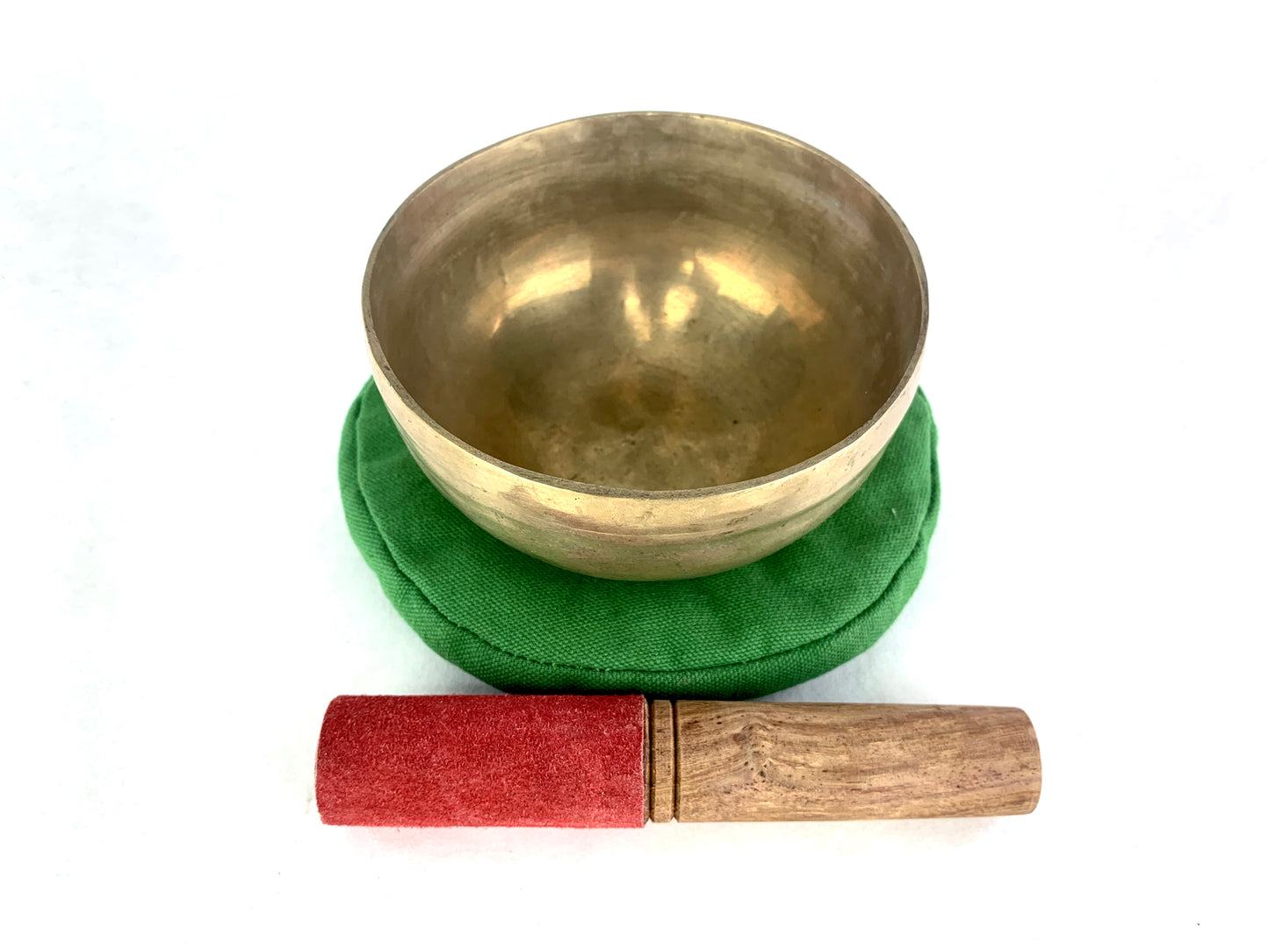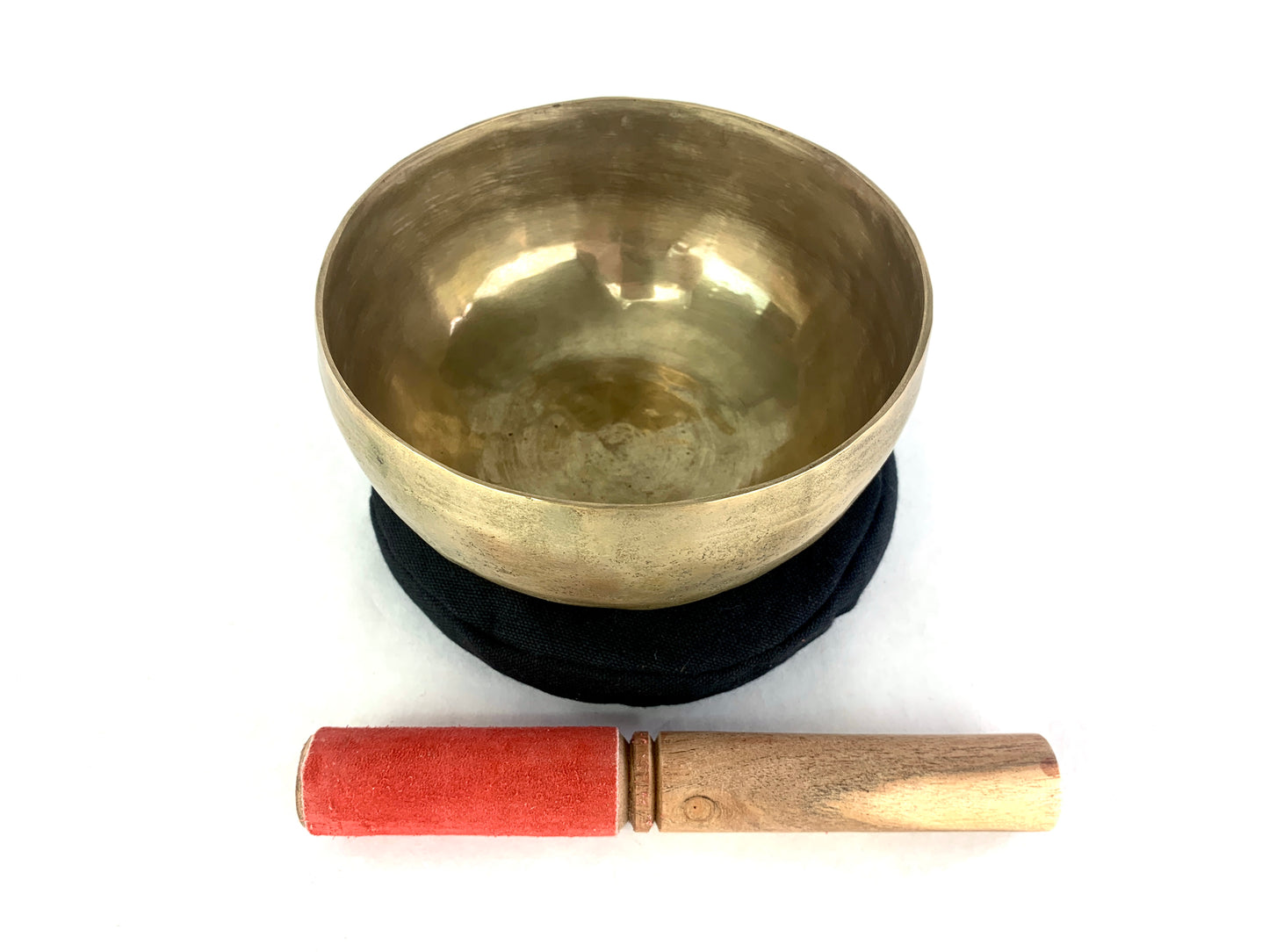Hand Hammered Bronze Himalayan Singing Bowls
Hand Hammered Bronze Himalayan Singing Bowls
SKU: SKU:NB419
This item earns Good Karma Rewards Points.
Couldn't load pickup availability
Ships from manufacturer: Estimated 15 days.
Ships from manufacturer: Estimated 15 days.
Ships from manufacturer: Estimated 15 days.
This item is temporarily out of stock. Please check back soon or click the 'Notify Me' button to receive a notification when this item arrives. We're working hard to get the items you need, and we have deliveries coming in every day.



Details
Each Hand-Hammered Bronze Himalayan Singing Bowl is individually crafted by skilled artisans using time-honored techniques passed down through generations. Made from a high-quality bronze alloy, every bowl produces a rich, layered tone that resonates deeply and sustains beautifully. The warm vibration enhances mindfulness, relaxation, and ceremony—perfect for integrating sound into spa and wellness practices. Each bowl includes a striker and resting cushion for professional presentation.
Why Your Guests Will Love It
• The deep, soothing tones encourage calm, grounding, and relaxation.
• Gentle vibrations help release tension and focus the mind.
• Enhances the sensory experience of massage, Reiki, yoga, and meditation sessions.
Why You’ll Love It
• Each handmade bowl has a unique tone and finish, adding authenticity to every treatment.
• Long, sustained resonance carries beautifully throughout the spa environment.
• Includes striker and cushion for immediate professional use.
• Versatile design suits tabletop use, treatment rooms, or group wellness experiences.
Pro Tips
• Use the bowl to signal the beginning or end of a service with a single mindful chime.
• Place the bowl on a presentation tray with oils or crystals to elevate visual appeal.
• For vibrational work, rest the bowl on the client’s body (heart or solar plexus area) and ring gently for a grounding effect.
Usage
Hold the bowl in your palm or place it on its cushion. To play, gently strike the outer rim or move the striker in a circular motion along the edge using smooth, full-arm movement. Adjust speed and pressure until a steady, resonant tone emerges. Ideal for transitions, guided meditation, or sound-infused treatments.
Benefits
• Bronze alloy produces warm, harmonically rich sound with excellent sustain.
• Encourages mindfulness, deep breathing, and emotional release.
• Supports energy balancing and creates a serene treatment atmosphere.
Care & Handling
After each use, wipe the bowl with a soft, dry cloth to maintain its finish and tone. Avoid harsh cleaners or soaking. Store on its cushion or in a padded bag to prevent dents or scratches.
Basic Precautions
• Strike lightly—excessive force may damage or distort tone.
• Keep bowls spaced at least 10 inches apart to prevent resonance interference.
• Always use a soft surface or cushion to preserve vibration quality.
Wellness & Historical Insight
Himalayan singing bowls date back over 2,000 years and were traditionally used in meditation, prayer, and ritual throughout Nepal, Tibet, and India. Their complex overtones are believed to harmonize energy and quiet the mind. Today, these hand-crafted bronze instruments remain an essential tool in modern sound therapy, connecting ancient craftsmanship with contemporary wellness practice.
Sounds of Different Size Bowls
| 4.25" | |
| 5" | |
| 6" |
|
- Choosing a selection results in a full page refresh.
- Opens in a new window.
- Details
Each Hand-Hammered Bronze Himalayan Singing Bowl is individually crafted by skilled artisans using time-honored techniques passed down through generations. Made from a high-quality bronze alloy, every bowl produces a rich, layered tone that resonates deeply and sustains beautifully. The warm vibration enhances mindfulness, relaxation, and ceremony—perfect for integrating sound into spa and wellness practices. Each bowl includes a striker and resting cushion for professional presentation.
Why Your Guests Will Love It
• The deep, soothing tones encourage calm, grounding, and relaxation.
• Gentle vibrations help release tension and focus the mind.
• Enhances the sensory experience of massage, Reiki, yoga, and meditation sessions.
Why You’ll Love It
• Each handmade bowl has a unique tone and finish, adding authenticity to every treatment.
• Long, sustained resonance carries beautifully throughout the spa environment.
• Includes striker and cushion for immediate professional use.
• Versatile design suits tabletop use, treatment rooms, or group wellness experiences.
Pro Tips
• Use the bowl to signal the beginning or end of a service with a single mindful chime.
• Place the bowl on a presentation tray with oils or crystals to elevate visual appeal.
• For vibrational work, rest the bowl on the client’s body (heart or solar plexus area) and ring gently for a grounding effect.
Usage
Hold the bowl in your palm or place it on its cushion. To play, gently strike the outer rim or move the striker in a circular motion along the edge using smooth, full-arm movement. Adjust speed and pressure until a steady, resonant tone emerges. Ideal for transitions, guided meditation, or sound-infused treatments.
Benefits
• Bronze alloy produces warm, harmonically rich sound with excellent sustain.
• Encourages mindfulness, deep breathing, and emotional release.
• Supports energy balancing and creates a serene treatment atmosphere.
Care & Handling
After each use, wipe the bowl with a soft, dry cloth to maintain its finish and tone. Avoid harsh cleaners or soaking. Store on its cushion or in a padded bag to prevent dents or scratches.
Basic Precautions
• Strike lightly—excessive force may damage or distort tone.
• Keep bowls spaced at least 10 inches apart to prevent resonance interference.
• Always use a soft surface or cushion to preserve vibration quality.
Wellness & Historical Insight
Himalayan singing bowls date back over 2,000 years and were traditionally used in meditation, prayer, and ritual throughout Nepal, Tibet, and India. Their complex overtones are believed to harmonize energy and quiet the mind. Today, these hand-crafted bronze instruments remain an essential tool in modern sound therapy, connecting ancient craftsmanship with contemporary wellness practice.
Sounds of Different Size Bowls
| 4.25" | |
| 5" | |
| 6" |
|







